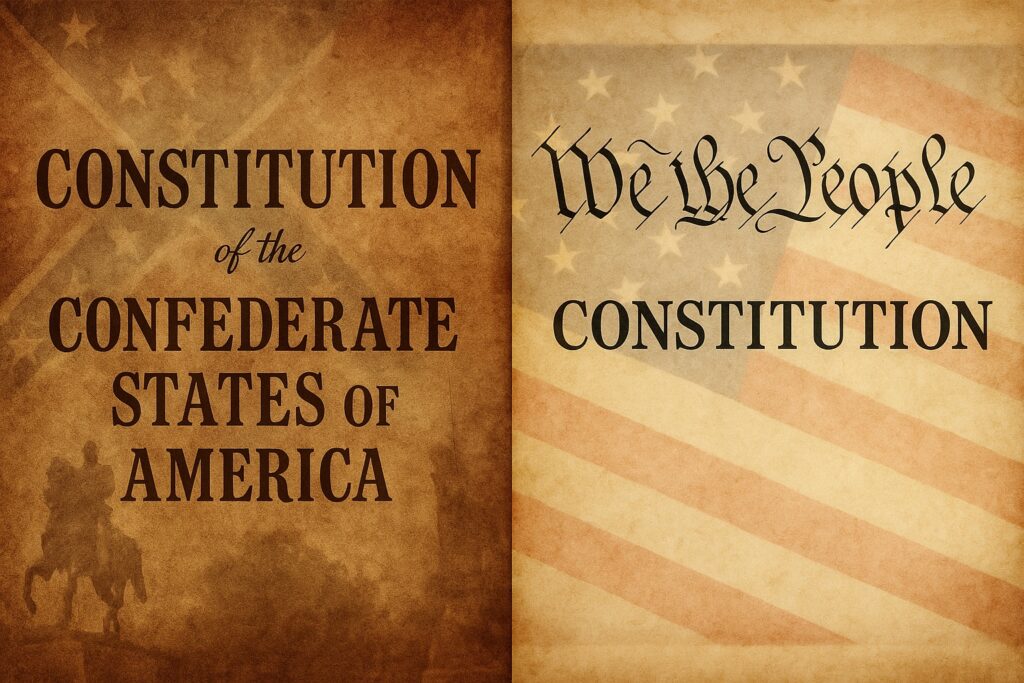
The Confederate Constitution, adopted in 1861, is one of the most overlooked founding documents in American history. While it closely mirrors the U.S. Constitution in structure, it diverges in meaningful and revealing ways. These differences provide insight into the Confederate States of America’s governing principles and its philosophical departure from the Union.
Here are ten key differences that separate the two foundational documents:
- Sovereignty of States
The Confederate Constitution begins by stating that “each State acting in its sovereign and independent character” established the new government. This places primary authority in the individual states, unlike the U.S. Constitution’s “We the People,” which implies a more unified national identity. - Presidential Term Limit
The Confederate President served a single, non-renewable six-year term. This was intended to reduce political entrenchment and prevent the executive from becoming too powerful. - Line-Item Veto
A major power not granted to the US President, the Confederate President could strike out specific portions of appropriations bills, allowing for greater control over government spending. A sort poke in the eye and refinement to the Yankee constitution. - Explicit Protection of Slavery
While the U.S. Constitution avoided using the word “slavery,” the Confederate document openly protected the institution and banned any laws that would impair it in Confederate territories. - Cabinet Members in Congress
The Confederate government permitted cabinet officers to also hold seats in Congress, encouraging direct communication between branches but blurring the separation of powers. - Ban on Protective Tariffs
The Confederate Constitution expressly forbade protective tariffs, reflecting Southern priorities favoring low taxes and free trade. - Limited Federal Internal Improvements
Federal funding for internal improvements such as roads and canals was restricted unless they were deemed absolutely necessary for inter-state commerce, further strengthening states’ control over infrastructure. - Sound Money Provisions
The Confederate government was limited in its ability to issue paper currency. There was a preference for a metallic standard, aimed at preventing inflation and promoting economic stability. - Amendment Process
Like the U.S. system, amendments required a two-thirds majority in Congress and ratification by three-fourths of the states. However, the Confederate process had no provision for constitutional conventions, limiting the pathways for change. - Direct Mention of God
The Confederate preamble contains the phrase “invoking the favor and guidance of Almighty God,” a religious invocation absent from the U.S. Constitution.
These distinctions underscore the ideological goals of the Confederacy: a decentralized government, limited federal authority, and the legal entrenchment of slavery. While the Confederate Constitution mirrored much of the U.S. framework, its changes reflect the stark political and cultural divides that led to the Civil War.
Explore More
You can read the full Confederate Constitution here.
For historic flags from the era, visit our Confederate Flag Collection.



More Stories
General P.G.T. Beauregard: The Grand Strategist of the Confederacy